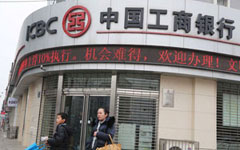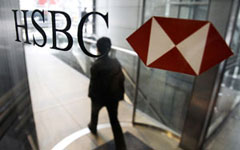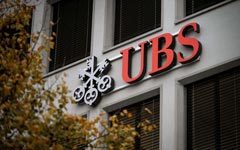Industrial & Commercial Bank of China Ltd and Bank of China Ltd won approval to change how capital ratios are calculated, in line with international standards, as regulators seek to ease financing constraints for the country's biggest banks.
ICBC, the nation's largest lender, and Bank of China, the fourth biggest, will be among the first in China to comply with Basel III guidelines for global banks' liquidity and risk buffers, they said in separate statements.
The new system may bolster banks' capital ratios by reducing the risk-weighting of some assets, analysts at China International Capital Corp wrote in a note on Thursday.

|
 |
|
 |
Under the revised capital rules, systemically important banks need to have a minimum core Tier 1 ratio of 8.5 percent and a Tier 1 ratio of 9.5 percent, with overall buffers of 11.5 percent before the end of 2018, according to the China Banking Regulatory Commission.
Bank of China's core Tier 1 ratio was at 9.69 percent on Dec 31, according to its annual report.
Changing the way the risk buffers are calculated will lift the measure by 0.5 to 1 percentage point and erase pressure on the bank to raise funds by selling shares, Mao Junhua and Huang Jie, Beijing-based analysts at CICC, wrote in a note.
Bank of China "recently" received approval from the banking regulator to begin applying the so-called advanced internal rating-based methodology, it said in a statement on its website on Thursday.
ICBC will use internal-rating based models to calculate risk-weighted assets and capital adequacy ratios, the bank said in its statement.
A financial institution may adopt such an approach - which allows the firm to use internal estimates for risks such as exposure to default - only if it complies with certain supervisory standards.
Slowing profit growth at China's biggest lenders has curbed their ability to retain earnings to meet capital requirements, forcing the lenders to raise funds by selling shares and bonds.
ICBC, Bank of China and their two closest competitors reported last month a combined 12 percent increase in 2013 profit, weaker than the year earlier's 15 percent.
ICBC, China Construction Bank Corp and Bank of China said last year they each plan to sell as much as 60 billion yuan ($9.7 billion) of a new type of debt with a writedown feature to boost Tier 2 capital. Agricultural Bank of China Ltd said last April it aims to raise 50 billion yuan in Tier 2 capital and 40 billion yuan with Tier 1 securities by the end of 2015.
